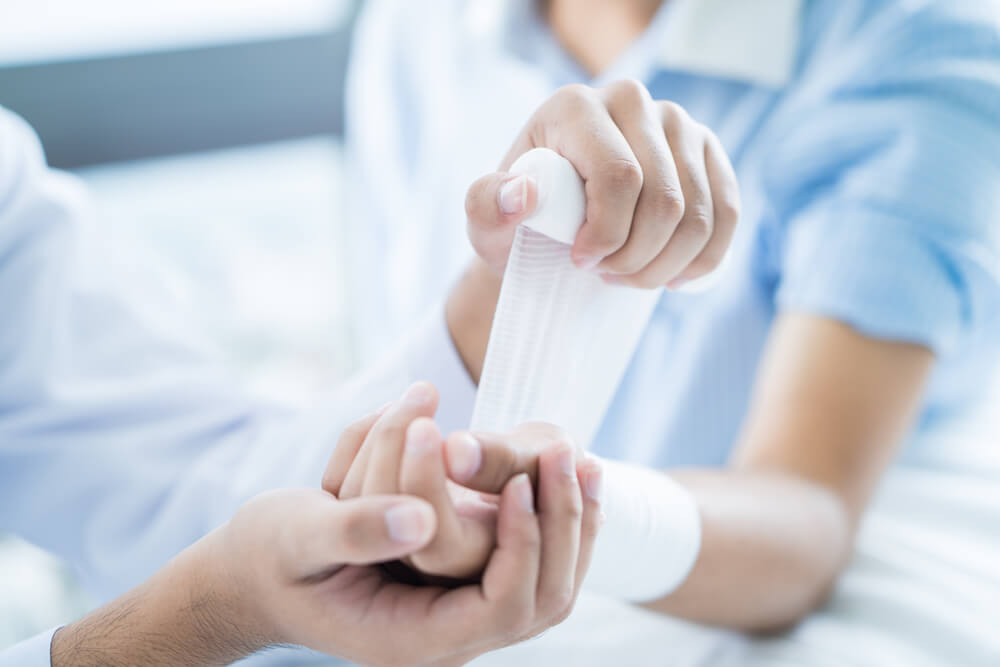Cuts and abrasions are often common injuries that do not require more than some disinfectant and a bandaid — but they can, in more severe cases, require a trip to the ER for emergency wound care. If you or a loved one has sustained a severe injury, like a significant cut that will not stop bleeding, seek medical attention immediately.
Cuts and scrapes are just minor versions of larger, more severe injuries. They can happen anytime, anywhere, and often occur at home in the kitchen or the garage, where sharp items that can cause puncture wounds are stored. The medical professionals at Complete Care provide emergency wound care for life’s biggest and smallest wounds.
What kinds of wounds constitute emergencies?
How can you tell which wounds constitute emergency wound care? You should seek medical attention immediately if any of the following apply:
- There is a foreign object such as soil, wood, or metal stuck in the wound
- The wound was a result of an animal bite
- The wound was a result of a puncture or laceration by a dirty object
- The wound is infected
- The wound is deeper than a half-inch
- The wound will not stop bleeding
- You have signs of sepsis (the body’s extreme response to an infection) which include:
- Disorientation
- Shortness of breath
- Fever, sweats
- Shivering, clammy skin
- Extreme pain or discomfort
If these do not apply to your injury, it doesn’t mean that you shouldn’t take your wound care seriously. The CDC wound care guidelines recommend a thorough cleaning of the wound before covering it with a bandage and regular reassessment to check if it is healing properly.
How do you treat an emergency wound?
When you have a cut, the first thing you want to do is stop the bleeding. In order to stop the bleeding, you will want to put something, like a towel or piece of cloth, between you and the wound and apply pressure.
Maintain steady and direct pressure on the wound and elevate the injured area for 15 minutes. Do not check to see if the bleeding has stopped until you have held pressure for a full 15 minutes. Once you have stopped the bleeding it is appropriate to attempt to clean the wound.
How does the ER treat wounds?
Wound management in an emergency room can be necessary for many reasons other than wound care with stitches. In the emergency room they can:
- Administer pain medication
- Prescribe antibiotics
- Give tetanus shots, rabies shots
- Administer IV fluids
- Close wounds with glue, stitches, or sutures
How do you know if a cut is infected?
More severe wounds also pose a greater risk for infection. Infections are caused by excess bacteria that your immune system can no longer fight. Infections, although sometimes obvious, can be difficult to detect early on and in closed wounds.
How can you tell if a cut is infected? Telltale signs of infection include:
- Skin around the cut or under the contusion is swollen and red
- Skin around the wound is hot to the touch accompanied with a high fever
- Pus is seeping from the cut
- Fatigue or lack of energy
- Severe pain
There are risk factors, but the only surefire way to avoid infection is to keep cuts clean. Infections are more common when a foreign object is lodged in the wound, and antibiotics are often required in conjunction with a thorough cleaning — for example, this is very common for wounds in bike accident injury treatment. If you have an infection you should report to an emergency center immediately for treatment.
Continue reading: Cycling road rash care
Stop in at any Complete Care freestanding clinic in Texas or Colorado for emergency wound care
If you have sustained a wound that needs emergency wound care do not hesitate to check into an emergency center for treatment. You should have a plan of action — preferably one that includes both a first aid kit and the ER phone number on speed dial — for sustaining cuts and scrapes at home.
If you do need emergency treatment, Complete Care has freestanding emergency room facilities located throughout Texas and in Colorado Springs that are open 24/7 and ready to take complete care of you.
